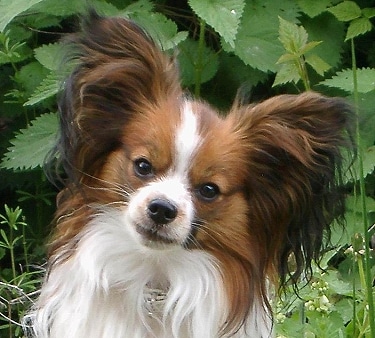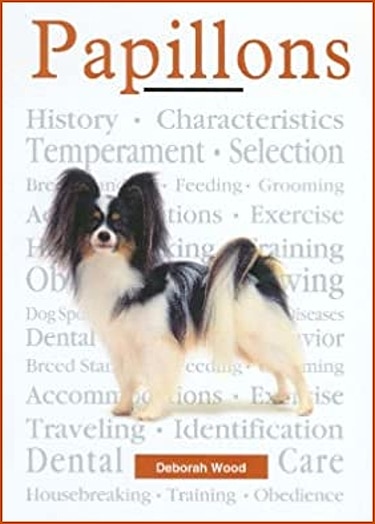
Although the Papillon may have originated in Spain or Italy hundreds and hundreds of years ago, both France and Belgium claim to have perfected and refined the breed. Despite the confusion, what is known is that the Papillon has been breeding true to type for the last 700 years – paintings of the old masters depict children of royalty at play with their Papillons.
The most distinguishing feature of the breed is its wide, erect and fringed ears which give it the appearance of a butterfly, or “papillon” in French. Despite its popularity with the French royalty, it wasn’t until the early to mid-1900s that the Papillon became popular in other parts of Europe and overseas. This handsome toy breed is well-suited to apartment living and does not need much outdoor exercise.
The drop-eared variety, known as the Phalène, is allowed; however, in Europe they are considered a separate breed.
Height: The height of a Papillon is 8 – 11″ (20.3 – 27.9cm)
Weight: Papillons weigh 9 – 10 lbs (4 – 4.5 kg)
Coat Type: The Papillon’s coat is profuse, long, fine, and silky. There is a frill on the chest and a long fringe on the ears. There is no undercoat.
Color: The Papillon’s coat is white with markings of any other color; some are tri-color (white, black and tan). Regular brushing takes care of its grooming needs.
Temperament: The Papillon is a quiet, devoted, and protective pet, although it can also be lively and playful at times.
Health Problems: PRA (Progressive Retinal Atrophy) which affects the eyes and blinds the dog eventually is found in Papillon. As well, Patella Luxatiois a problem with the knees; it is measured in Putnam scale, with a measurement of 0+0 indicating totally healthy knees, and a 4+4 measurement indicating severely affected knees. All responsible breeders should have their dogs tested for at least these two diseases Some clubs, such as the Scandinavian breed clubs request this testing.
Special Interest: Marie Antoinette had a Papillon, and it was rumored that she was so attached to her Papillon that she took it with her to her own execution.
Classifications:
AKC: Group 5 – Toys
ANKC: Group 1 – Toy
CKC: Group 5 – Toys
FCI: Group 9 Section 9 Continental Toy Spaniel
KC: Non-Sporting – Toys
NZKC: Toy
UKC: Companion Breeds
Kennel.com Recommends PAPILLONS
PAPILLONS
 Kennel.com – Complete Guide to Dogs The Dog Lovers Guide
Kennel.com – Complete Guide to Dogs The Dog Lovers Guide